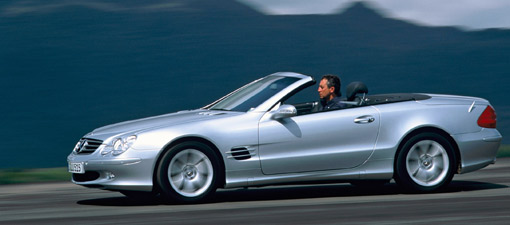If you’re in the market for a new car, but the current offerings of electric, plug-in hybrid and hybrid cars aren’t suitable there’s an often-overlooked way to get better gas mileage - more gears.
In recent years we’ve seen six and seven speed automatic gearboxes becoming the normal for many mid-size and luxury cars. Recently, Chrysler joined in -- announcing that it was bringing an eight-speed automatic gearbox to its full-size, rear-wheel drive sedans.
Why the trend? What’s the reason behind ever-larger gearboxes -- and can they really improve your gas mileage?
Engines are super-efficient -- at one speed
You may not know this, but while an average car engine may be capable of operating between say 1,000 and 5,000 rpm without damaging itself, it is only efficient at a fraction of those speeds.
In fact, the best way to operate a car engine efficiently is to operate it within a very narrow rev range.
It’s about physics
Let’s go back to our spinning engine. During hard acceleration, the car’s engine has to provide a lot of power to accelerate the car. Producing high power equals high fuel consumption.
As a consequence, a car is normally at its most inefficient when accelerating.
Basic physics dictate that it takes much less energy to move something along at a constant speed than it does to accelerate to that speed. As a consequence, when the car reaches cruising speed, much less energy is needed to push the car along.

Mercedes Benz seeks 8-speed dual-clutch gearbox
Hybrids take advantage of this
With a hybrid engine, the car’s electronic brain tries wherever possible to operate the engine within that very narrow power band.
If you’ve ever driven a car like a Toyota Prius at low speed you might have heard the engine running faster than you’d expect for the speed. That’s because the engine is being run at its most efficient speed -- and any excess power is being recaptured and stored in the car’s battery pack as electrical energy.
The same is true of the engine in the 2012 Chevrolet Volt. Instead of operating at a wide range of speeds, the Volt’s engine operates within a much narrower power band, meaning it operates more efficiently than most car engines.
But gears help too
But the real trick here is to remember that the engine speed -- not the speed at the wheels -- is the real key to fuel economy.
Put more gears in and allow the car to operate within its most efficient energy band -- and your gas mileage soars.
As the engine works less hard, emissions are also reduced, meaning your car is kinder to the environment and your wallet.
It really helps
If you’re in the market for a new car -- and you do a lot of freeway cruising -- we’d recommend that you invest in a car with six, seven or even eight gears. It may cost a little more, but the savings in fuel should pay you back in relatively short order.
While having more gears will get you better gas mileage over a standard gas car, it won't give you as high a gas mileage as a hybrid, plug-in hybrid or electric car -- but if you need a greener car that isn't an expensive hybrid or plug-in, more gears really are your key to better fuel economy.
+++++++++++













